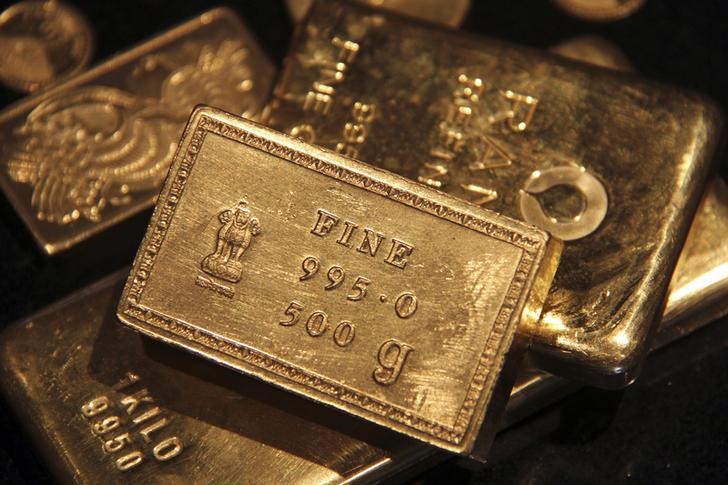By Barani Krishnan
Investing.com - The last time gold bulls felt this much love during Valentine’s was five years back, when bullion ended up more than 3% in February 2017. Big difference then was gold was trading at least $500 below today’s level.
On Monday, as energy and metals markets resumed their rally from supply disruption fears related to the chance of a Russian invasion of Ukraine, gold particularly shone — rising 4% month-to-date and hitting an eight month high above 1,870 an ounce.
More importantly, bullion was now less than $30 from recapturing the $1,900 handle it last held in the summer of 2021.
Gold’s most active contract on New York’s Comex, April, settled up $27.30, or 1.5%, at $1,869.40 an ounce. The session peak was $1,872.80, the highest gold had ever gotten to since mid-November
“Gold’s not just where it is today because of that chain, ring or little trinket you may be buying sweetheart on Valentine’s Day, but more because of the geopolitical backdrop of Russia-Ukraine and the inflation fear that’s tearing across the United States and the world,” said Philllip Streible, precious metals strategist at Blue Line Futures in Chicago.
After months of dreary price action, gold bulls began seeing some sustained upward momentum from late January as the rumblings of war from the Russia-Ukraine conflict picked up amid relentless inflation growth in the United States from an economy recovering robustly from Covid conditions.
Russia invaded and annexed the Crimean Peninsula between February and March 2014, sparking an international outcry and a wave of economic sanctions. Experts fear the same fate of Ukraine this time, after a massive buildup of Russian forces at the Ukrainian border in recent weeks.
White House National Security Advisor Jake Sullivan said Russia could invade Ukraine “any day now”, based on U.S. intelligence. Moscow says it wants to end NATO’s expansion to Eastern Europe and has called for intensified talks between Washington and the non-aligned treaty.
Senior Federal Reserve banker James Bullard, meanwhile, said the central bank’s credibility will be on the line if it doesn't hike U.S. interest rates adequately to fight runaway inflation.
“Our credibility is on the line here and we do have to react to the data,” Bullard, who is St. Louis Fed President, said during an appearance on the CNBC network on Monday. “I do think we need to front-load more of our planned removal of accommodation than we would have previously. We’ve been surprised to the upside on inflation. This is a lot of inflation.”
The Fed slashed interest rates to almost zero after the outbreak of the coronavirus pandemic in March 2020. It is expected to resort to a series of rate hikes this year to counter inflation, growing at its fastest pace in 40 years on the Consumer Price Index as well as the central bank's preferred inflation indicator -- the Personal Consumption Expenditures Price Index.
Goldman Sachs (NYSE:GS) said last week that it expects the Fed to institute seven quarter-percentage point rate hikes this year, up from the Wall Street bank's previous forecast of five. The Federal Reserve has seven policy meetings scheduled between March and December, meaning it could raise rates every time it meets this year, if Goldman Sachs is right.
Bullard shocked markets last week by saying that he wished for the Fed to have a full percentage point increase by July 1. The central bank meets thrice between March and July 1, meaning it has to increase rates by more than a quarter percentage point at least one time to achieve Bullard’s target.
“I think my position is a good one, and I’ll try to convince my colleagues that it’s a good one,” Bullard said, adding that he would, however, defer to the decision by Fed Chair Jerome Powell. One of the more moderate voices of the central bank, Powell has said that the Fed will be “nimble” with rate hikes to ensure no excessive disruptions to the economy and markets.
Bullard said the inflation experienced by the United States was “very bad” for low- and moderate-income households.
“People are unhappy, consumer confidence is declining,” Bullard said. “This is not a good situation. We have to reassure people that we’re going to defend our inflation target and we’re going to get back to 2%.”
The Fed is mandated to keep inflation at or below 2% a year while striving to grow the economy and achieve maximum employment, defined by a jobless rate of 4.0% or below.
